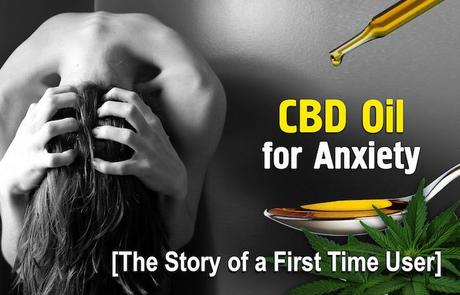Scientists have worked for years to develop effective treatments to mood disorders such as depression and anxiety. Countless chemically-dense medications have been developed to change the way the mind processes different emotions.
These medications react with the body in various ways. Some interact with serotonin receptors and some with norepinephrine inhibitors, but almost all of them have been shown to cause some kind of negative physical side effect.
Prescription antidepressants have been linked to side effects ranging from insomnia, headaches, chronic pain, nausea, and diarrhea, to more serious ailments such as reduced blood clotting capacity, lower sexual ability and increased risk of suicide.
With the list of side-effects ever growing, many scientists have started to do research into the effectiveness of CBD as natural treatment for mood disorders.
How Does CBD Interact with the Body?
There is no single cause for mood disorders. Some are brought on from chemical imbalances, some from a lack of vitamins, some stem from certain diseases and others are caused from trauma or stressful circumstances. Unfortunately, many medicines will correct one problem, while flaring up another.
For instance, some anti depression medications will help with depression, but will make anxiety worse. On top of that, many medicines will occasionally have lapses in efficacy, meaning that negative emotions and tendencies can suddenly come screaming back. Although these lapses may not last long, they increase the risk of suicide in those who suffer from mood disorders.

Not only that cannabidiol can lower anxiety, but it also helps reduce the symptoms associated with a wide range of psychological conditions and brain disorders. The studies I mentioned above indicate, CBD may prove to be an effective treatment for: Post-traumatic stress disorder. Generalized anxiety disorder.
" data-orig-size="700,450" sizes="(max-width: 700px) 100vw, 700px" data-image-title="marijuanabreak_CBD_Oil_for_Anxiety-1" data-orig-file="https://varindersingh4.files.wordpress.com/2019/07/marijuanabreak_cbd_oil_for_anxiety-1.jpg" data-image-meta="{"aperture":"0","credit":"","camera":"","caption":"","created_timestamp":"0","copyright":"","focal_length":"0","iso":"0","shutter_speed":"0","title":"","orientation":"0"}" data-medium-file="https://varindersingh4.files.wordpress.com/2019/07/marijuanabreak_cbd_oil_for_anxiety-1.jpg?w=300" data-permalink="https://varindersingh4.wordpress.com/2019/07/02/cbd-for-anxiety-and-depression/marijuanabreak_cbd_oil_for_anxiety-1/" alt="cbd for anxiety and panic attacks" srcset="https://varindersingh4.files.wordpress.com/2019/07/marijuanabreak_cbd_oil_for_anxiety-1.jpg 700w, https://varindersingh4.files.wordpress.com/2019/07/marijuanabreak_cbd_oil_for_anxiety-1.jpg?w=150 150w, https://varindersingh4.files.wordpress.com/2019/07/marijuanabreak_cbd_oil_for_anxiety-1.jpg?w=300 300w" class="alignnone size-full wp-image-264" data-large-file="https://varindersingh4.files.wordpress.com/2019/07/marijuanabreak_cbd_oil_for_anxiety-1.jpg?w=700" />cbd for anxiety and depressionOne of the reasons these negative side effects can occur is because antidepressants change the way the brain functions. They interact with key systems, causing the brain to react to try to reestablish homeostasis. When homeostasis (the term for a stable equilibrium within the body,) is disrupted, it can affect a lot of other key systems.
That is what makes CBD so special. Instead of interrupting homeostasis, CBD actually helps it. CBD interacts with a part of the body called the endocannabinoid system. This system runs throughout the body and is responsible for maintaining homeostasis. The system has two primary receptors, CB1 which is primarily associated with the central nervous system, and CB2, which has more to do with the immune system and other peripheral systems.
When CBD enters the body it mimics the compounds humans naturally produce in order to interact with and enhance endocannabinoid signaling. When it does this, CBD is able to interact with parts of the brain and different chemical systems through the endocannabinoid system to promote healing and balance.
Some studies have shown that CBD can help regulate systems outside of the endocannabinoid system. For instance, CBD has been shown to interact with serotonin receptors to increase the serotonin levels in the body – leading to improved mood, decreased levels of anxiety and a longer, fuller night’s sleep. CBD can also interact with vanilloid pain receptors to sooth injury-related pain and chronic pain. It also has several anti-inflammatory qualities, meaning it can help reduce swelling, decrease muscle and joint pain and even help those with brain injuries such as concussions.
Humans have been taking CBD for thousands of years, but scientists have only recently begun to do in-depth research into its healing properties. Every year studies find more and more ways that CBD can heal the body. Although there haven’t been many clinical trails yet, preclinical studies show great promise in CBD’s ability to sooth the symptoms of those with mood disorders such as depression and anxiety.
“Preclinical evidence conclusively demonstrates CBD’s efficacy in reducing anxiety behaviors relevant to multiple disorders…, with a notable lack of anxiogenic effects,” this 2015 study states.
Helping regulate hormones and chemicals, keeping the brain’s signaling in check, decreasing the rate of sleep disorders, soothing pain and inflammation and maintaining homeostasis are all ways that CBD can help those with mood disorders.
The body always wants to maintain balance, so if a system is functioning out of order, it will do whatever it can to reestablish normal operations. Taking CBD is a natural way to help the body keep everything functioning normally.
How Is CBD Taken?
CBD is taken in a variety of ways. After being extracted from the hemp plant, CBD is typically concentrated and turned into an oil, which is then incorporated into a variety of products. Different methods of ingestion have different effects, with some in particular having quick response times and a high absorption rate.
The most effective way to take CBD is by vaping it. When CBD is vaped, it is inhaled into the lungs and is absorbed almost instantly into the blood stream. Some users say they can feel effects within seconds, while others say it takes a few minutes. Really it just comes down to the individual using it and the concentration of CBD in the vape mixture.
Because it is absorbed so quickly into the blood stream, vaping allows the body to absorb up to 40% of the CBD. Since the substance is absorbed so quickly, this method of ingestion is ideal for those who suffer from anxiety or panic attacks, migraines, or any other sudden ailment that may pop up during the day.
For those who don’t like to vape, taking a CBD tincture is another effective way to take CBD. Tinctures are a very diverse form of administration. They are most commonly taken sublingually – with a small dose of liquid being held under the tongue for a few seconds before swallowing. When CBD is taken this way, it is absorbed into blood vessels in the mouth, allowing it to hit the bloodstream and quickly take effect.
There are also other ways to take tinctures, though. For example, since it is a liquid, a dose can be added to a cup of coffee or tea, or can be mixed into a pot of soup or stew.
Tinctures allow between 20-35% of CBD to be absorbed into the body. This method is very popular among those with long term or chronic conditions.
Finally, CBD can also be taken in a capsule or edible form. When CBD is administered in this way, it must pass through the digestive system and be broken down before it is allowed to be absorbed into the blood stream. This means that capsules and edibles take a little more time to start working.
There are several trade offs, though, that make this form of ingestion worth while. Since it takes longer to be absorbed, the effects of CBD taken by capsule or edible last much longer. Edibles and capsules are also mess-free and are easy to incorporate into a daily routine. Between 6 and 15% of CBD is absorbed when consumed in this way.
Click here for a full list of CBD products we recommend for depression, anxiety and other mood disorders. Be sure to consult a physician before making any changes to your medical routine.
References
Callén, L., Moreno, E., Barroso-Chinea, P., Moreno-Delgado, D., Cortés, A., Mallol, J., … McCormick, P. J. (2012). Cannabinoid Receptors CB1 and CB2Form Functional Heteromers in Brain. The Journal of Biological Chemistry, 287(25), 20851–20865. http://doi.org/10.1074/jbc.M111.335273
Shannon, S., & Opila-Lehman, J. (2016). Effectiveness of Cannabidiol Oil for Pediatric Anxiety and Insomnia as Part of Posttraumatic Stress Disorder: A Case Report. The Permanente Journal, 20(4), 108–111. http://doi.org/10.7812/TPP/16-005
Zuardi, A.W. (2008). Cannabidiol: from an inactive cannabinoid to a drug with wide spectrum of action. Rev Bras Psiquiatr, 30(3), 271-280. https://www.ncbi.nlm.nih.gov/pubmed/18833429
Blessing, E. M., Steenkamp, M. M., Manzanares, J., & Marmar, C. R. (2015). Cannabidiol as a Potential Treatment for Anxiety Disorders. Neurotherapeutics, 12(4), 825–836. http://doi.org/10.1007/s13311-015-0387-1
40.712775 -74.005973
